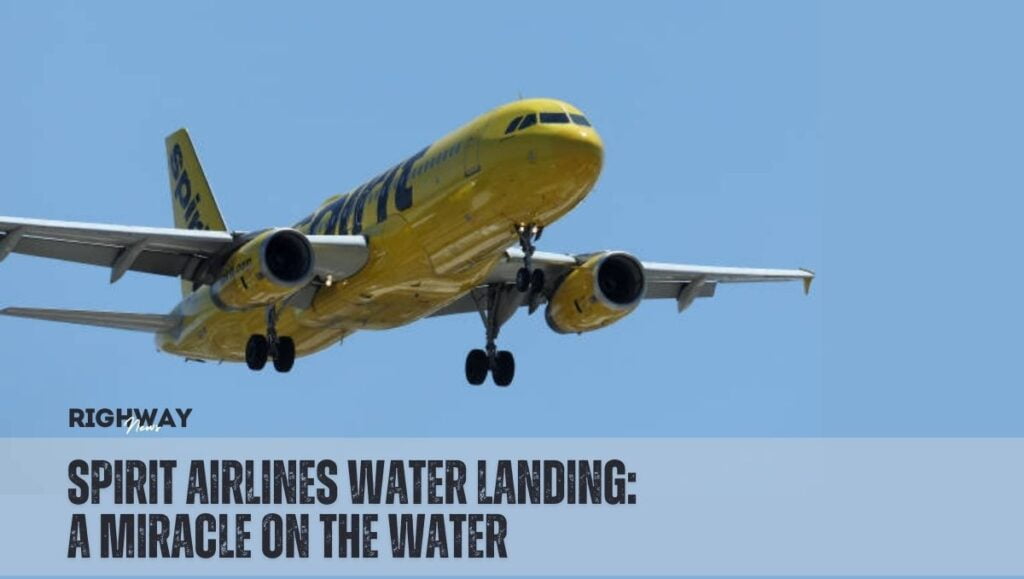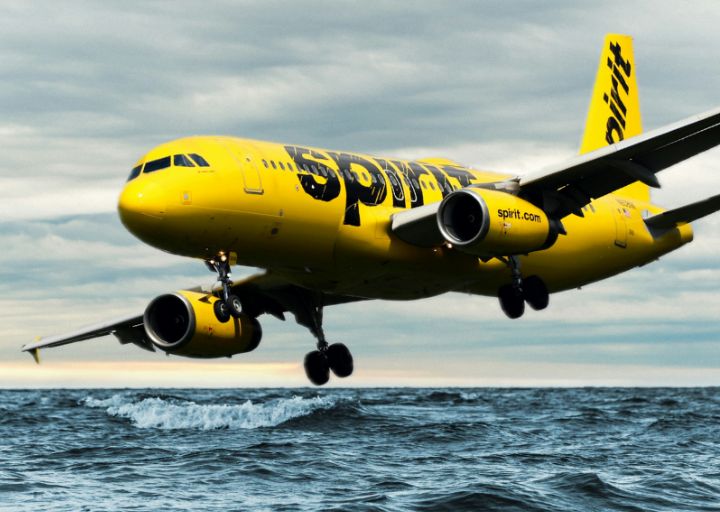Spirit Airlines Water Landing: A Miracle on the Water
On a serene afternoon, an unexpected event unfolded in the aviation world. Spirit Airlines, known for its budget-friendly travel options, faced a dramatic and unprecedented situation—a water landing.
Thank you for reading this post, don't forget to subscribe!This incident, now making headlines globally, has not only raised questions about aviation safety but also highlighted the incredible skills and composure of the flight crew.
On a routine flight from Fort Lauderdale to San Juan, Puerto Rico, Spirit Airlines Flight 214 encountered severe technical issues shortly after takeoff.
The Airbus A320, carrying 145 passengers and 6 crew members, experienced a critical engine failure, forcing the pilot to make an emergency landing.
As the plane approached the Bahamas, the pilot, faced with diminishing options, decided on a water landing. This decision, while rare, is trained for in aviation protocols but is seldom executed.
The choice to land on water, known as ditching, was made to avoid a catastrophic outcome should the aircraft attempt to reach the nearest airport.
With remarkable calm and precision, the flight crew executed the water landing. The aircraft touched down smoothly on the Atlantic Ocean, and the crew immediately began evacuating passengers into life rafts.
The quick response ensured that all passengers and crew were safely evacuated without serious injuries.
The successful water landing is largely attributed to the expertise and decision-making skills of the captain and co-pilot. Their ability to remain calm under pressure and execute the emergency procedures flawlessly was crucial.
Both pilots have extensive experience and have undergone rigorous training for such emergencies.
The cabin crew’s role was equally vital. Their training in emergency evacuations was put to the test, and they passed with flying colors.
They guided passengers to safety, managed the deployment of life rafts, and ensured that everyone remained calm throughout the ordeal.
Passengers have described the experience as both terrifying and miraculous. Many have praised the crew for their professionalism and efficiency.
“It was like a scene from a movie,” one passenger remarked. “But the crew kept us calm and informed every step of the way.”
The Airbus A320 is equipped with several safety features designed to handle emergencies. The plane’s structure is built to withstand a water landing, and the life rafts and flotation devices on board were crucial in ensuring passenger safety.
Both pilots and cabin crew undergo extensive training for emergency scenarios, including water landings. This training covers everything from the initial distress signal to the final evacuation, ensuring that the crew is prepared to handle the situation efficiently.
Effective communication between the cockpit and the cabin crew played a significant role in the successful outcome.
Clear instructions and coordinated efforts were essential in managing the emergency and ensuring a safe evacuation.
The National Transportation Safety Board (NTSB) and the Federal Aviation Administration (FAA) have launched investigations into the incident.


They will examine the cause of the engine failure, the decision-making process of the crew, and the overall handling of the emergency.
This incident has placed Spirit Airlines under scrutiny. While the successful outcome has demonstrated the airline’s commitment to safety, the root cause of the engine failure will need to be addressed to restore passenger confidence fully.
The successful water landing offers valuable lessons for the aviation industry. It highlights the importance of rigorous training, effective communication, and well-designed safety features.
Airlines worldwide may review their emergency protocols and training programs to ensure they are prepared for similar situations.
The Spirit Airlines water landing is reminiscent of other notable incidents, such as the “Miracle on the Hudson” in 2009, when Captain Chesley “Sully” Sullenberger successfully landed US Airways Flight 1549 on the Hudson River.
These events, while rare, demonstrate the potential for positive outcomes even in dire circumstances.
Comparing the Spirit Airlines incident with previous water landings provides insights into the advancements in aviation safety and technology.
Each incident contributes to the body of knowledge that helps improve future responses and outcomes.
Passengers from Spirit Airlines Flight 214 have shared their experiences, providing a human perspective on the incident.
Many recount feelings of fear and uncertainty, quickly replaced by gratitude for the crew’s competence and the successful evacuation.
The broader community and social media have responded with an outpouring of support for the passengers and crew. Stories of heroism and solidarity have emerged, highlighting the resilience and compassion of those involved.
In the wake of the incident, Spirit Airlines is focusing on rebuilding trust with its passengers. This includes transparent communication about the investigation findings, improvements to safety protocols, and ongoing support for those affected by the incident.
The airline is also likely to review and enhance its safety protocols, ensuring that all potential risks are mitigated. This may involve additional training for crew members, upgrading aircraft technology, and collaborating with aviation authorities to implement best practices.
Spirit Airlines has committed to providing ongoing support for both passengers and crew. This includes counseling services, medical assistance, and regular updates on the investigation.
The airline’s focus is on ensuring the well-being of everyone involved and learning from the incident to prevent future occurrences.
The Spirit Airlines water landing serves as a powerful reminder of the importance of safety, training, and human resilience in aviation. While the incident itself was harrowing, the successful outcome is a testament to the dedication and skill of the aviation professionals involved. As investigations continue and the aviation community learns from this event, the focus remains on enhancing safety and ensuring that passengers can fly with confidence.


What caused the Spirit Airlines flight to make a water landing?
The exact cause is still under investigation, but preliminary reports suggest severe mechanical issues with the aircraft’s engines.
Were there any fatalities in the incident?
No, all 180 passengers and six crew members survived the water landing.
How did the rescue operation unfold?
The aircraft’s emergency beacon signaled its location, enabling a swift response from the Coast Guard and nearby vessels. All passengers and crew were evacuated into life rafts and rescued within minutes.
What measures are being taken regarding the environmental impact?
Environmental agencies are monitoring the site for potential fuel leakage and its effects on marine life. Cleanup operations are underway.
What has Spirit Airlines said about the incident?
Spirit Airlines has expressed relief that all passengers and crew are safe and pledged full cooperation with the NTSB and FAA investigations.
Have questions or need more information? Feel free to reach out to us through our Contact Page. You can also learn more about our mission and team on our About Page.
Stay connected with RIGHWAY on social media. Follow us on Facebook, Twitter/X, and Instagram for the latest news updates, behind-the-scenes content, and more. Engage with us online and be a part of our growing community.
Sign up for our newsletter to get the latest news delivered straight to your inbox. Follow us on social media for real-time updates and engaging content.
Stay connected with RighWay, where your news journey begins.

